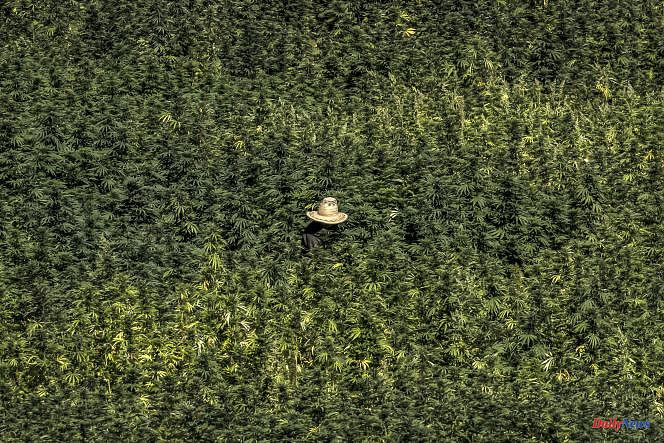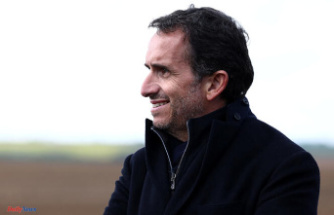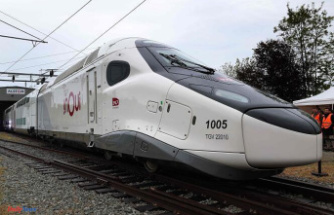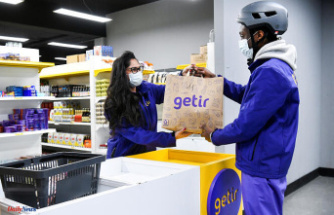From Mount Tidirhine, the highest peak in the Rif range in northern Morocco, the cannabis fields stretch to the horizon line. In this early spring, the land is bare, just plowed. Farmers are waiting for the rain to sow the seeds whose flowers will be harvested in August. From his house in Ketama, at an altitude of 1,700 meters, Abdellatif Adebibe overlooks the valley where iodine spray from the Mediterranean mingle with the scents of cedars. "We are here in the temple of kif", presents the 70-year-old farmer, president of the Association for the Development of Central Rif.
In this valley grows a local variety. “The native plant, cultivated for centuries,” he explains. Our ancestors crushed the seeds to make oil that cured skin diseases. They made cloth, ropes, baskets... Some smoked the dried flower mixed with tobacco in sebsi [pipes]. The Rifains call it the "beldiya" (which comes from here, from the "bled"), as opposed to the imported hybrid varieties, "gaouriya" (the western one) or "roumiya" (the foreign one), at the rate of THC (main psychoactive molecule) much stronger and with higher yields, but criticized for their ecological impact. Over the years, these varieties have invaded the Rif range, gradually supplanting the "beldiya".
In 2021, Morocco, the world's largest producer of cannabis resin according to the UN (with an estimated 55,000 hectares devoted to this crop), passed a law authorizing the use of the plant for medical and industrial purposes. A pride for Abdellatif Adebibe, who has traveled around the world to the United Nations platform to defend its legalization. And who now observes the work in progress: "You must not take the wrong path. We will have to rehabilitate the beldiya if we want to place the man and his land at the center of the project. »
Pakistana, mexicana, khardala, critikal… All these modern hybrid varieties, imported from Europe and North America by intermediaries, appeared in the Rif in the early 2000s, according to Kenza Afsahi, sociologist at the university from Bordeaux. At the time, European consumers were increasingly turning to products with a high THC content. “The hybrids were partly about adapting to their changing taste,” she explains, in the context of growing competition for Moroccan hashish in European markets. »
Repeated droughts
Ten years later, international drug seizures pointed to a paradox: while Morocco had significantly reduced its cannabis crops as part of a major conversion program (from 134,000 hectares in 2003 to 47,500 in 2011, according to the United Nations Office on Drugs and Crime), "the production of Moroccan resin had not diminished, with increased THC levels", relates Pierre-Arnaud Chouvy. In 2015, the geographer signed with Kenza Afsahi a study published by the French Observatory of Drugs and Addictive Tendencies (OFDT) revealing how these hybrids, with a yield two to three times higher than traditional kif, had been able to compensate for the reduction in surface area.
The same study showed the extent to which these new varieties upset the ecological balances of the region, already weakened by decades of intensive cannabis monoculture, at the cost of massive deforestation. Very water-intensive, "they have forced farmers to invest in irrigation equipment and to drill ever deeper wells, because these hybrids cannot be cultivated without irrigation", reports Pierre-Arnaud Chouvy. Unlike, according to him, the variety of countries, "cultivable in rain-fed agriculture or in any case without massive recourse to irrigation".
As Morocco experiences repeated droughts, the researcher warns of the "ecological crisis" that threatens the Rif: "In addition to the pollution and soil depletion caused for a long time by large quantities of chemical inputs, these hybrids could now quickly deplete its water resources. In this context, the country variety is most likely to continue to be grown there. Otherwise, one day, the Rif will probably not even have the heart to survive. »
On the road from Ketama to Chefchaouen, dozens of retention basins, illegal pumping, pipes that meander through valleys devoid of forests bear witness to this overexploitation. In Chefchaouen, a veritable "water war" has broken out "between farmers who drain large quantities into rivers and groundwater, and those who cannot afford it," says Saïd, 36. , which has a few plots on the heights of the city. “As a result,” he says, “peasants migrate to the cities or abroad and rent their land. »
Towards a controlled designation of origin?
Saïd grows one-third critikal, the latest popular variety, and two-thirds beldiya. What to make the comparison: "Critikal gives stems up to twice as large and therefore takes longer to grow. It is harvested in October, it must be irrigated all summer. It also requires a lot of fertilizer, sells for less, and is much worse for smoking. According to him, “People are starting to regret cultivating critikal; even in the douars where only that is cultivated, some have abandoned it and come back to the beldiya”.
But years of hybridization and uncontrolled crossbreeding have prompted Moroccan scientists to question the survival of the local variety. In 2021, the National Institute for Agronomic Research (INRA) launched a research program on the issue. Its goal: "To identify and characterize the local varieties known under the generic name of beldiya, that is to say, to know their DNA, their biochemical composition, their yield, their morphology, in order to register them in the official catalog of Moroccan varieties. and preserve their genetic heritage", explains Mouad Chentouf, coordinator of this program, who, halfway through, says he is "confident". According to him, the success of the legal cannabis sector depends on it: "For a sustainable and autonomous development of this sector, it is necessary to return to the local variety, adapted to the environment where it is cultivated. »
Moroccan industrialists engaged in the manufacture of cannabis-based products have also begun to defend this "heritage to be saved", which appears to them to be Morocco's asset in a highly competitive global market. Like the Pharma 5 laboratory, which, in a study published by the Moroccan media Le Desk, highlights the quality of beldiya, its lower THC content, its unique smell and flavor... Until pleading for a Appellation d'Origine Contrôlée (AOC), "guarantee of superior quality and ecological and social responsibility, like France has its champagne or Japan has its Kobe beef".
A "made in the Rif" label? "Made in Ketama", prefers Abdellatif Adebibe, who defends an "organic, AOC, fair appellation" in the "historic zone of kif". On Mount Tidirhine, he is one of the farmers taking part in the INRA project. Below his house, he surrounded a plot whose harvest is reserved for his laboratories. And this "in order to take the right direction", he says: "To restore the value of the indigenous plant, to promote the local development of the region, to guarantee a future for its population. »












